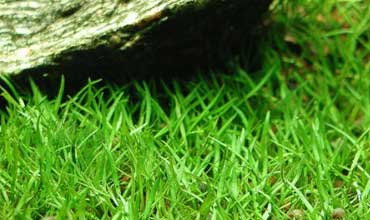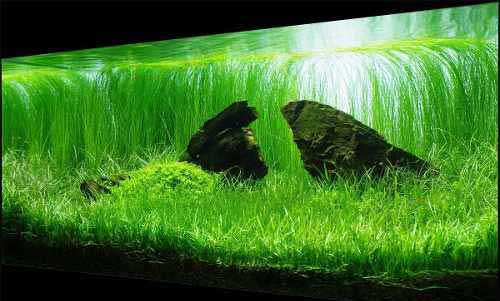Lilaeopsis
The Brazilian micro sword, Lilaeopsis Brasiliensis, plant has short stems and is commonly used as an aquarium carpet. They can be found throughout most of Brazil, growing fully or partially submerged along the banks of streams and rivers.
- Care Level: Moderately Difficult
- pH: 6.8-7.5
- Lighting Requirements: High
- Temperature: 70 to 83 F (21-28 C)
- Maximum Size: 3 Inches (7.5 cm)
Table of Contents
Introduction
Growth and Care
Propagation
Compatability
The plant can reach a maximum size of 7.5cm (3 inches) in the home aquarium. It can be used to create an impressive dense carpet if provided with enough CO2 and nutrients at the right lighting level.
It can sometimes be difficult to grow the plant, and it’s recommended that only aquarists with some expertise growing aquatic plants attempt to grow it.
Growth and Care
The Brazilian micro sword will usually be put in the foreground of an aquarium. It must be planted in a substrate rich in nutrients. Our personal recommendation is the premium substrate Fluorite, which gives plant roots all the nutrients they need to grow. To get the plant to grow properly and well, it needs to be provided with plenty of lighting. The Lilaeopsis Brasiliensis needs T5 or T8 fluorescent lights. Some hobbyists have reportedly had success using LED lights with the plant. The minimum light level should be kept to 3 watts per gallon of water. The light should also be direct light. With all that said though, the plant can grow in shade. It just won’t grow as big or strong in the shade. Growing this plant properly also means providing it with fertilizer regularly. Hobbyists should also add nitrate, phosphate, and micro-nutrients to their water column. Seachem Flourish Excel is our recommendation for ensuring your plant grows properly.
To get the most growth out of your Brazilian micro sword, you should supplement your aquarium with additional CO2. To keep the growth lush and green, you should keep a good balance between the current, dissolved CO2 and aquarium depth to make sure the plant is able to make use of the CO2.
When introducing the lilaeopsis, the aim is usually to create a carpet. This can be done by inserting the plants across diagonal rows over the aquarium substrate. The aim is to create something that looks like a chessboard. That way the plant will spread into the open spaces, and you’ll have that carpet you’ve dreamed of in your aquarium.
Propagation
Lilaeopsis propagates through runners. The runners can be allowed to spread by themselves or pinched off. The plant creates a carpet effect that many aquarists desire if left by itself to grow. It carpets the substrate of the aquarium, creating a spectacular aquascape.
Compatibility
The lilaeopsis is compatible with many community fish, but it will not do well if paired with large digging cichlids. It’s also good to avoid large herbivorous fish. Despite this, the plant does fine when kept with Plecos.



